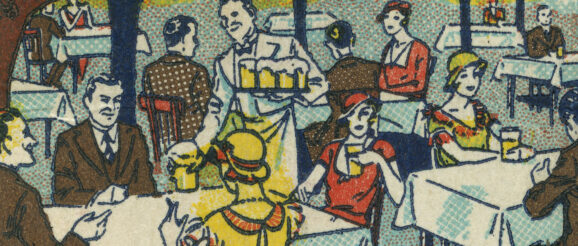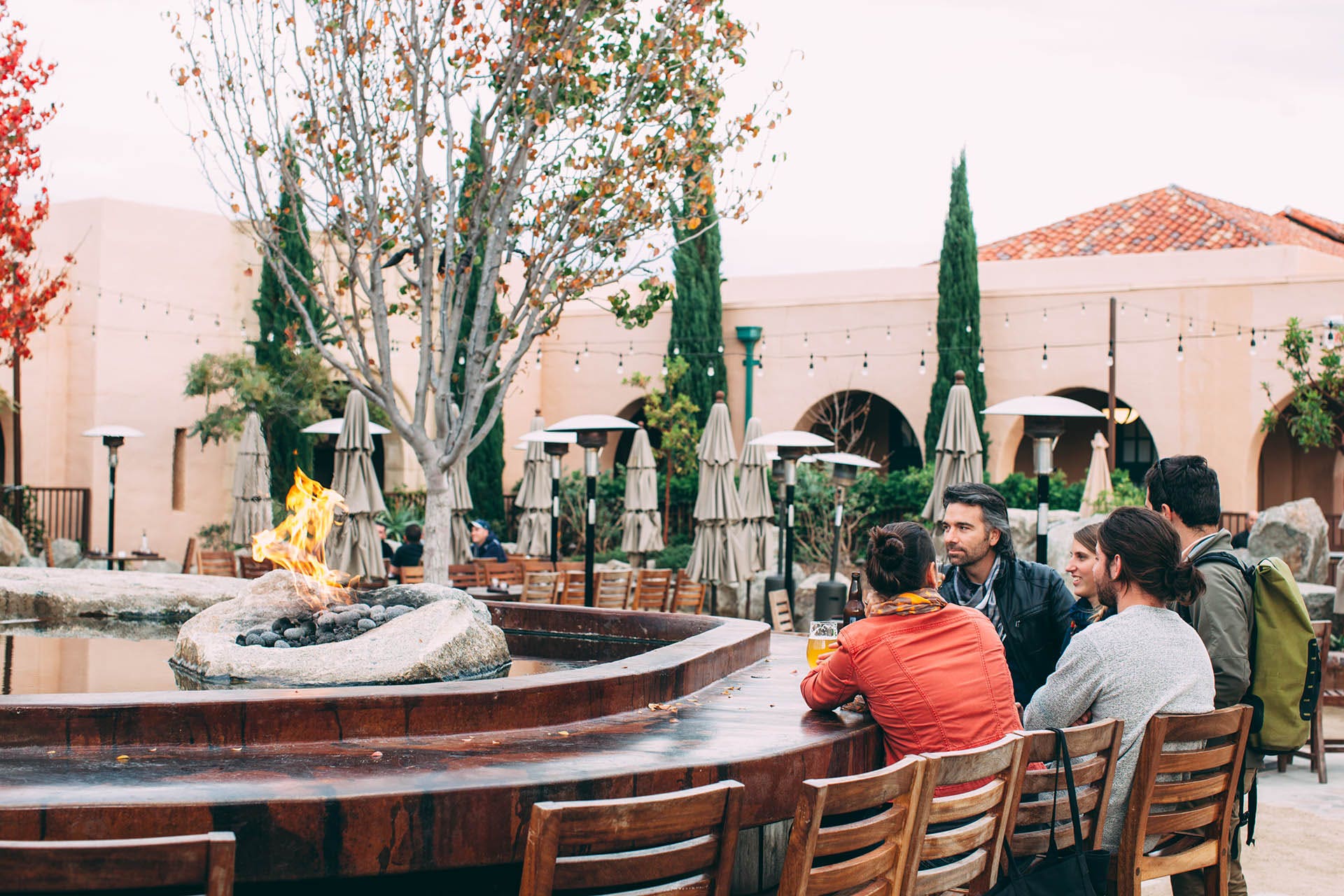The History of America’s Beer Gardens Includes Urban Expansion and Immigrant Innovation


The appeal of drinking outdoors is eternal, but beer gardens are a relatively recent arrival in the United States. In the 1800s, people from Germany and Eastern Europe emigrated to the U.S. to escape religious persecution, political unrest or agricultural scarcity.
Many brought beer-making traditions with them. Soon, beer gardens and beer halls opened to serve those communities.
“The histories of beer halls and beer gardens are linked,” says Theresa McCulla, curator of the American Brewing History Initiative at the Smithsonian Institution’s National Museum of American History in Washington, D.C. Particularly associated with Munich and the southern German state of Bavaria, beer halls are indoors typically, while beer gardens are “communal, airy, outdoor settings,” she says.
Many of these German immigrants had expertise in brewing beer on larger, often industrial scales. This lessened the need for homebrewing. German immigrants also introduced many to lager-style beers, an easy-drinking alternative to ales, porters or stouts.
“This new, entrancing style of brewing, light and effervescent and clear, was different from the English ales that preceded them,” says McCulla. “The setting in which they enjoyed this lager beer: beer gardens or beer halls. Anywhere Germans settled, you’d find these establishments.”

Immigrants from Bohemia, now part of the Czech Republic, also brought beer and beer gardens to the U.S. in the 19th century. One of the oldest and best-known surviving beer gardens, New York City’s Bohemian Hall and Beer Garden, is still owned and run by descendants of the community.
Historically, Bohemia was under Austrian rule, while Bavaria was part of Germany. Yet, the bordering regions had almost identical beer cultures, says Evan Rail, a Prague-based beer expert and Wine Enthusiast contributor.
“It’s the same drinking culture, the same atmosphere, the same food,” even the same chestnut trees shading the tables below, he says.
One notable and distinctly Czech contribution to America’s beer scene are Pilsners, a pale lager style introduced in 1842, named for the Czech city of Pilsen.
For immigrants from Germany and Bohemia, beer halls and beer gardens offered a taste of home. In the late 1800s into the early 1900s, these were also de facto community centers, childcare facilities, and places for political speeches and other civic and organizational activities. They cemented community and ethnic identity for immigrants.
In his 2007 book, , historian Tom Goyens describes these institutions as “clubhouses of trade-union locals, singing societies or mutual-aid organizations.”
These drinking establishments were well-lit and served familiar lager beer, instead of ales or whiskey common in Irish American saloons. He says it made them “suitable and safe places to convene” to discuss politics and current affairs.
Beer gardens were sprawling, family-friendly outdoor spaces that encouraged patrons to linger. As they developed in American cities during the 1840s through the 1870s, music, games and other entertainments often were part of the draw. Many resembled elaborate amusement parks. (Anheuser-Busch would later capitalize on this idea by creating a series of theme parks called Busch Gardens.)
How over-the-top were they? In his book, , historian Andrew F. Smith describes Schlitz Garden, established in 1879 by the Schlitz brewery. It featured “a concert pavilion, a dance hall, a bowling alley, refreshment parlors and three-story pagoda-like structure that offered a panoramic view of the city.”

New York City’s largest beer garden, established in 1858, was the Atlantic Garden, located in Manhattan’s Bowery neighborhood. The lofty, skylit space contained a restaurant, several bars, a shooting gallery, billiard tables, bowling alleys and an orchestra.
In general, beer gardens were positioned as wholesome alternatives to the growing numbers of saloons, which appealed primarily to working men.
“Saloons were dark, small places, often clustered in city centers, where a wage worker, almost always a man, would drop in to spend the money he earned that day,” says McCulla.
Most would belly up to the bar, slug back a shot of whiskey and leave. By comparison, “beer gardens were open to entire families, and invited them to settle in and enjoy, creating a new kind of leisure time,” she says.
Anti-German sentiment after World War I, followed by Prohibition, wilted the beer garden/beer hall culture in America. The venues have seen a recent resurgence, McCulla says, inspired by the growth of craft breweries, farmer’s markets and artisan food halls.
Today’s beer gardens have a similar feel and function. The relaxed outdoor social spaces remain, with kids and pets often welcomed. Beer and food are still central to the experience, often accompanied by live music, lawn games or other diversions. And while some echo the sprawl of historic counterparts, many have a more moderate scale, fitted into patios or rooftop spaces.
While Schlitz and Atlantic Gardens have long closed, here are seven historic and notable beer gardens across the U.S. to enjoy beer in the open air. (note: availability of venues to the public is subject to change, please check ahead before visiting.)
August Schell Brewing, New Ulm, MN: Founded by a German immigrant in 1860, the brewery and biergarten is now owned by his descendants, making it the second-oldest family-owned brewery in the U.S. after Yuengling. The grounds include a deer enclosure and roaming peacocks.
Bohemian Hall & Beer Garden, Astoria, NY: In 1919, the Bohemian Hall was founded by the Bohemian Citizens’ Benevolent Society. It’s still owned and managed by the Czech and Slovak community group. Look for plenty of Czech-style Pilsners on tap to enjoy at picnic-style benches outdoors.
Estabrook Beer Garden, Milwaukee: This beer garden is set in a public park on a bluff just above a waterfall. Thanks to its proximity to the Milwaukee River, some patrons arrive via hiking trails, kayak or canoe. Patrons are encouraged to bring their own steins to enjoy beers imported from the Munich Hofbräuhaus.
Great Lakes Brewing, Cleveland: Established in 1988, the facility includes a museum of Ohio beer history, along with an outdoor patio and beer garden. The brewpub and beer garden spaces were refurbished at the beginning of the year.
Mecklenburg Gardens, Cincinnati: Since the restaurant stayed open through Prohibition, this is one of the few venues that can boast 150-plus years of continuous operation, founded in 1865. Delicacies like bratwurst, mettwurst and goettawurst accompany an array of German-style beers.
Scholz Garten in Austin: The oldest beer garden in America opened in 1866, where it became a hub for German immigrants. In 2019, new management arrived. The restaurant now has a “Texas-German” influence and a full cocktail menu in addition to German and local draft beers.
Stone Brewing World Bistro and Gardens, San Diego: While not the oldest, this oasis-like space comes closest to the escapist spirit of historic beer gardens. A full acre incorporates koi ponds, open grassy spaces and amusements like bocce courts and a movie courtyard. There’s a second bistro/garden 30 miles away in Escondido.
